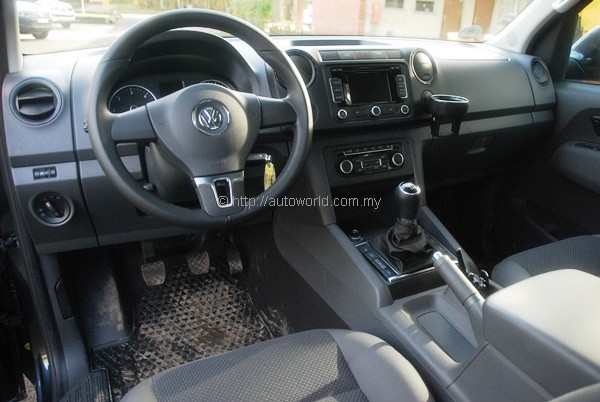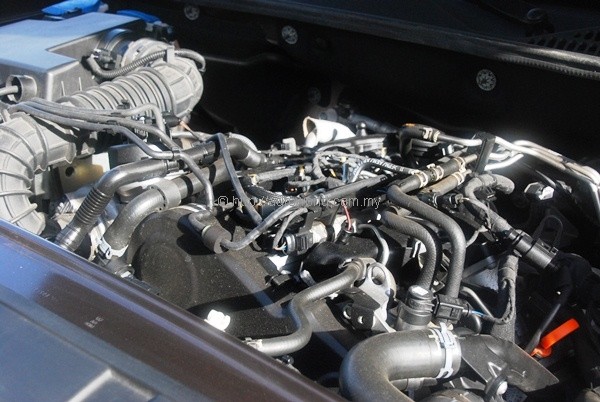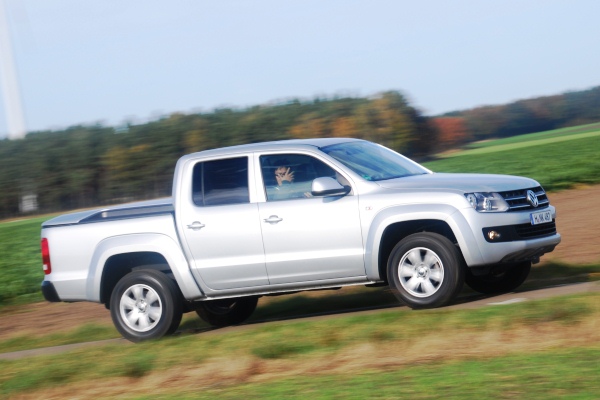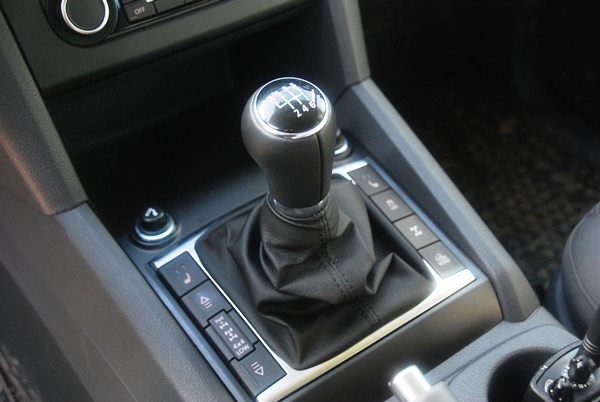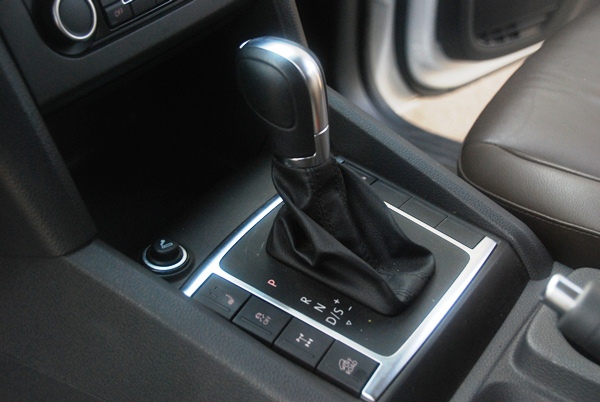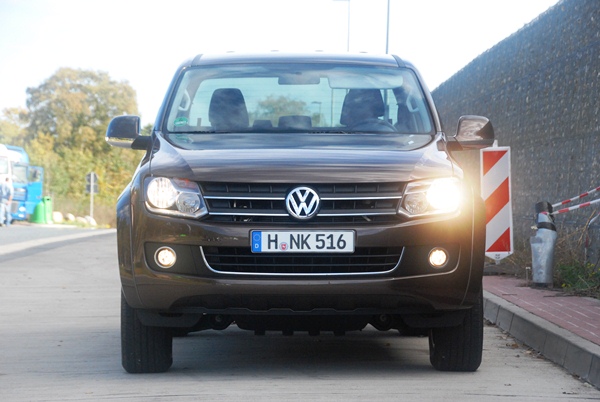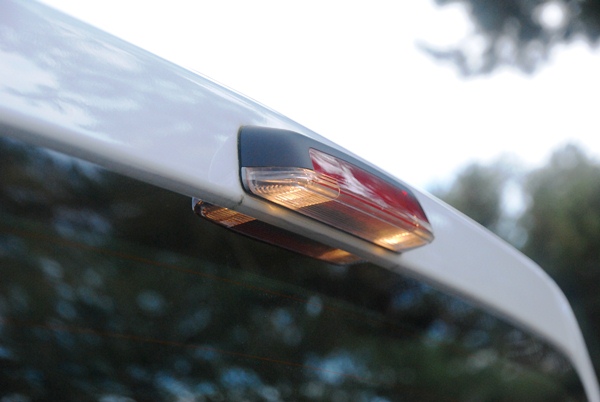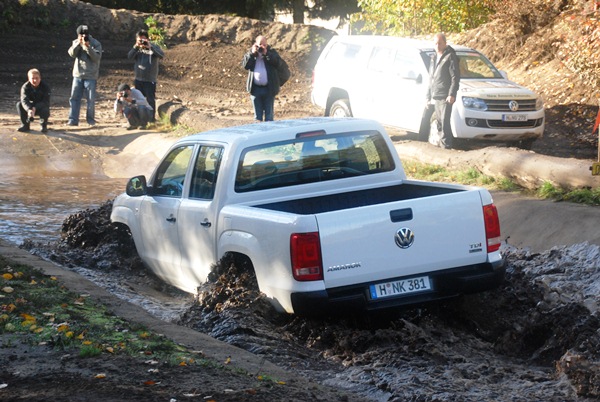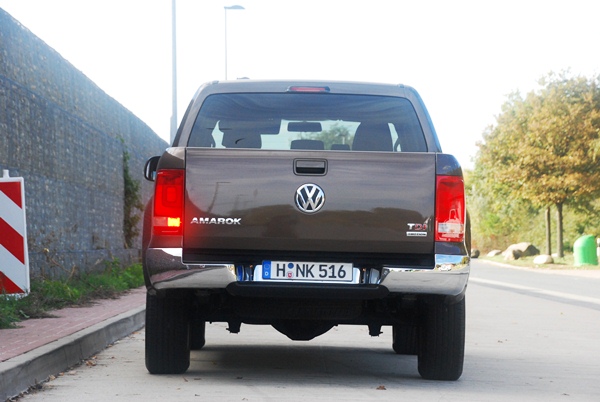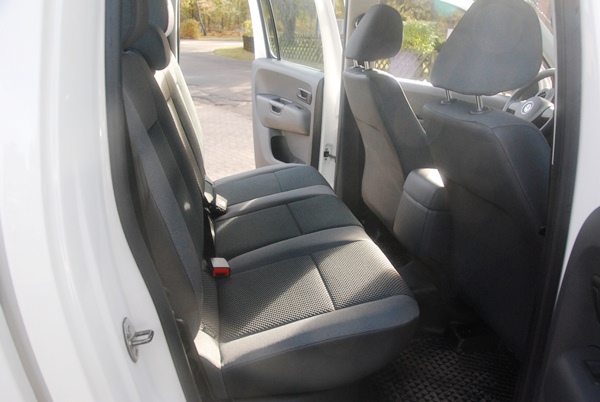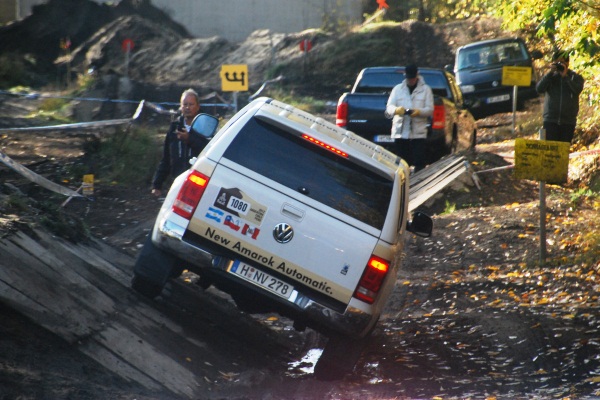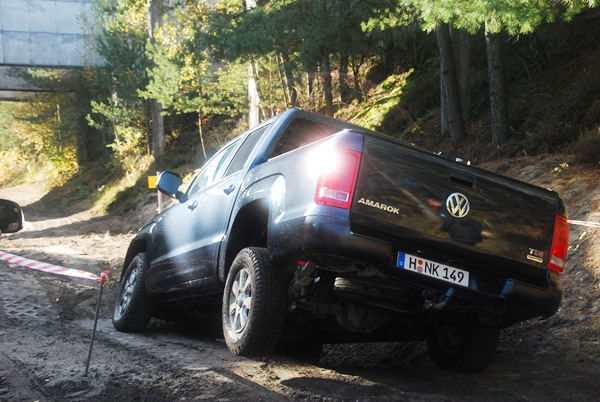Volkswagen Amarok tested in Hannover, Germany
Despite a relatively long history in making cars and commercial vehicles, Volkswagen does not have much of a heritage making pick-up trucks. Its only notable contribution in the segment was a rebadged Toyota Hilux that was sold in Europe during the 1990s as the Volkswagen Taro. The joint venture with Toyota ended without much success, but in the mid-2000s, Volkswagen announced its decision to revisit the pick-up market, and the Amarok was eventually born.
Unlike the Volkswagen passenger cars that we are more familiar with, the Amarok is a product of Volkswagen’s Light Commercial Vehicle division, which operates as a separate business unit. These guys are responsible for various Volkswagen vans such as the Caddy and T5 Transporter. In markets where the volumes are justified, their products are sold in separate showrooms from the Golfs and the Passats.
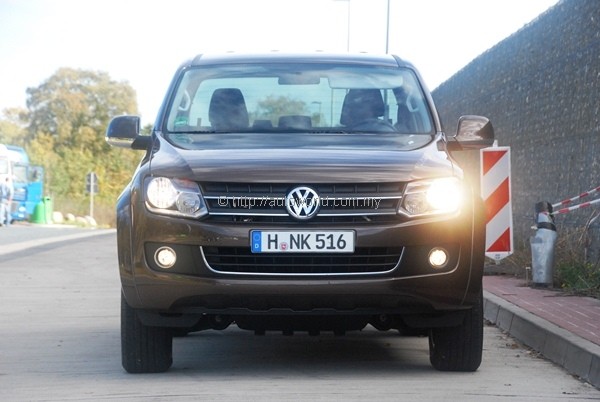 |
| Amarok’s appearance is plain, but in line with VW’s corporate look. |
Plans are currently in the pipeline for the Amarok to be launched in Malaysia, and plenty of hints have been dropped in the past couple of years. It has made two successive appearances in the Volkswagen Das Auto shows, and we had the opportunity to briefly drive it over a short obstacle track during our visit to VW’s HQ in Wolfsburg last year.
More recently, we were flown immediately after our Golf 7 media drive in Sardinia to Hannover, Germany, to examine out the Amarok in a more comprehensive test drive programme that featured a mixture of on and off-road terrain. This part of the programme was exclusive to Malaysian journalists, and all but confirms Volkswagen’s plans to bring the Amarok to Malaysia.
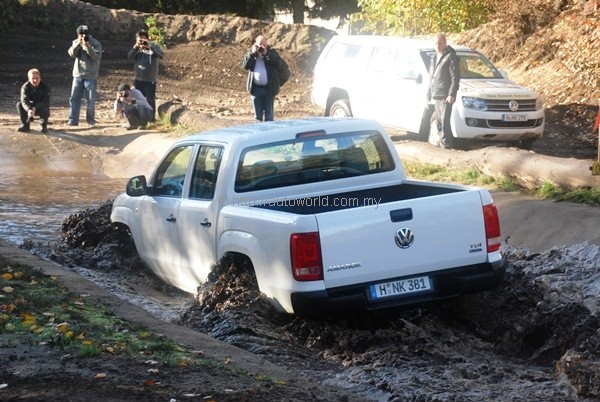 |
| Wading depth is 600mm. |
We were not hinted at any launch dates, nor were we given any price indications, although it will be safe to assume that being a non-ASEAN truck, we are looking at somewhere north of RM120k. Power will most certainly come from a 2.0-litre turbodiesel engine available in three possible combinations – 121hp / 340Nm, 161hp / 400Nm, or 177hp / 420Nm, the latter two being twin turbo versions. Our bets are on Volkswagen bringing in the top 177hp version.
With the Amarok, your selection of transmissions will further determine your driveline architecture. Pick the 6-speed manual, you get an electronic part-time 4WD system with low-range ratios like every other pick-up in the market. The other option is a ZF 8-speed automatic and along with it comes a permanent all-wheel drive system with an electronic central diff lock.
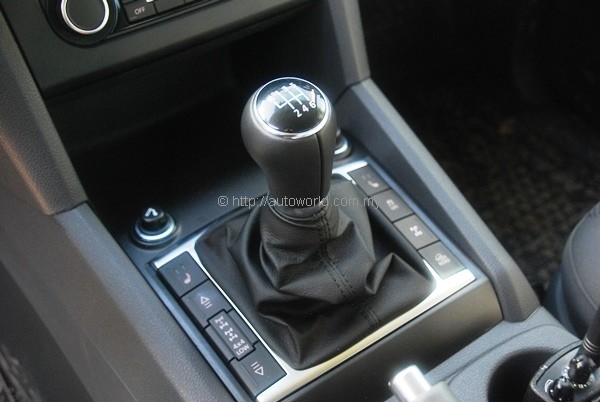 |
| 6-speed manual transmission with low-range transfer case. |
My day’s programme started with the off-road course and as our colleagues from other publications picked and chose their rides, I found myself strapped to the meanest-looking tricked-out unit (H NV 889) with uprated rally-grade suspension components. I have nevertheless been assured that its engine and driveline components are stock standard, and the vehicle’s only modifications were its suspension, roll cage, and get this, bucket seats (in a pick-up truck – first time for everything, I suppose).
The off-road course included a number of obstacles of varying difficulties – slope climbing, hill descent, side tilt, water wading, mud, and ruts deep enough to lift a wheel. It goes without saying that the Amarok, particularly our tricked out unit, handled all obstacles without problems, though the caveat that Volkswagen would most certainly have not picked a track that the Amarok could not traverse for a media test drive must be kept in mind.
 |
| Lockable centre differential and extreme throttle finesse proved useful in traversing these ruts. |
Useful observations to note during the off-road course was the vehicle’s good overall composure in handling the various obstacles. The 2.0-litre turbodiesel engine was surprisingly lag-free giving almost instantaneous throttle response – an extremely useful trait to have on slippery surfaces, where precise throttle control is crucial. Too much throttle, you’ll just kick up mud and ‘dig in'; insufficient throttle, you can’t move – the Amarok’s linear throttle response is, therefore, excellent for the application.
The most intensively-tested ability of the Amarok during the off-road course was its hill descent system, which helped bring us down slopes that I would frankly have not tried without supervision. The routine was simple enough in description – put it in gear, gently nudge it towards the slope, and release all pedals. It worked every time alright, but it still takes a bit of faith to trust the system as the slopes we took were steep enough (35-40 degrees minimum) that you can’t see the bottom until you were on the way down.
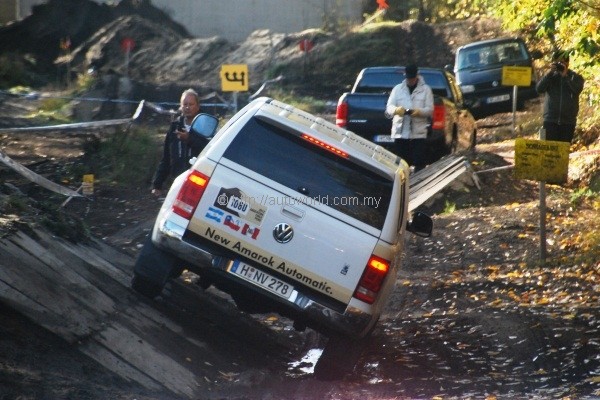 |
| Amarok can tilt at angles of up to 45 degrees without toppling. Slope on test track is 30 degrees. |
Generally, the Amarok performed well to the off-road course, and the unmistakable impression is that Volkswagen built its first pick-up with the capacity to take plenty of abuse. On the road, impressions remain positive, but there is also an unmistakable sense of blandness that made experience rather unmemorable. Save for a harsh ride even by pick-up truck standards, there were actually no major vices to report, but perhaps because how clinically the Amarok gets the job done, there is a distinct lack of character to the drive experience.
Yet, when one dissects the essence of the Amarok’s driving experience to various individual bits, there are quite a few positives to report. First is the overall refinement in terms of mechanical smoothness and cabin noise levels, both of which are consistent with the high standards set by products of the Volkswagen Group. The engine in particular deserves praise, not just for its refinement, but also for how it is impressively free from lag considering the high outputs that VW has extracted from its small capacity. Compared to the Ford Ranger 2.2, the Amarok’s engine can be considered as almost lag free.
Considering that this is Volkswagen’s first own attempt at a pick-up truck, the Amarok can rightly be described as an impressive piece of engineering with a good blend of mechanical toughness and refinement. The question it will need to answer when it comes here is how will it position itself with respect to its rivals? It is unlikely to be cheap enough to make a business case as a workhorse, which means that it must position itself as a premium product, and that means going against trucks like the Ford Ranger Wildtrak or the Chevrolet Colorado 2.8 LTZ, neither of which will be easy meat for the VW.






